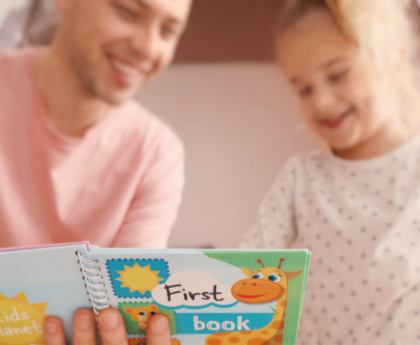In many classrooms, every child is expected to climb the same reading ladder at the same pace, using the same tools. But not all students start from the same place. Some ascend with ease, while others struggle to reach the first rung or get stuck halfway. Differentiation in reading instruction offers a better way forward, providing multiple ladders, different climbing techniques, and varied types of support that meet each child exactly where they are in their reading journey.
Understanding Differentiated Reading Instruction: Beyond Just “Different”
Differentiated instruction is often misunderstood as simply giving different students different tasks. However, true differentiation is far more thoughtful and responsive than that. It’s a systematic approach to teaching that acknowledges the diverse learning needs, readiness levels, interests, and learning profiles of students in the classroom.
In reading instruction specifically, differentiation involves adapting content, processes, products, and learning environments to provide appropriate challenges and supports for all readers. This approach is firmly grounded in the Science of Reading and recognizes that children develop the five essential reading skills—phonemic awareness, phonics, fluency, vocabulary, and comprehension—at different rates and through different pathways.
Let’s examine the key difference between instruction that is merely different versus truly differentiated:
Different: Phil has three reading groups in his classroom based on an assessment at the beginning of the year. Throughout the entire school year, he simply uses grade-level texts with his middle group, below-grade texts with his lower group, and above-grade texts with his higher group.
Differentiated: Jill regularly assesses her students’ reading progress every few weeks and adjusts her groupings based on current needs. Sometimes she has three groups, sometimes six, depending on what her ongoing assessments reveal about her students’ changing abilities.
The critical distinction is that true differentiation is dynamic, responsive, and based on continual assessment of student needs rather than static groupings or assumptions about ability.
Essential Components of Differentiated Reading Instruction
Effective differentiated reading instruction incorporates several key components that work together to meet diverse learning needs:
1. Ongoing Assessment
Differentiation begins with knowing exactly where each student stands in their reading development. This requires regular, targeted assessments that provide specific data about phonemic awareness, decoding skills, fluency, vocabulary knowledge, and comprehension abilities.
Assessment in a differentiated classroom isn’t just about determining levels—it’s about identifying specific strengths and needs. For example, rather than simply labeling a child as “behind in reading,” assessment might reveal that the student has strong comprehension but struggles with decoding multisyllabic words, pointing to specific instructional needs.
Formative assessments should be conducted frequently and might include:
- Running records to analyze miscues and strategies
- Phonological awareness screenings
- Sight word recognition checks
- Oral reading fluency measures
- Comprehension discussions
These ongoing assessments guide instructional decisions and groupings, ensuring that teaching targets current needs rather than assumptions about student abilities.
2. Flexible Grouping
Unlike traditional ability grouping, differentiated instruction uses flexible grouping patterns that change based on specific skill needs, interests, or learning preferences. Students might work in different configurations throughout a single reading block.
For example, Kate uses her morning message to target different spelling patterns for different groups of students. During one message, she leaves a blank for the “sh” in “share” for one group working on digraphs, a blank for the silent “e” in “lake” for another group, and a blank after “scrub” for a third group practicing inflectional endings.
This flexibility allows students to receive targeted support in areas of need while also experiencing success in areas of strength. It prevents the stigma of fixed-ability groups and provides multiple opportunities for peer collaboration and learning.
3. Tailored Instruction
In differentiated reading classrooms, teachers adjust various elements to meet student needs:
Content: What students learn
- Texts at different readability levels
- Different complexity of vocabulary
- Varied levels of background knowledge support
Process: How students learn
- Different pacing of instruction
- Varied levels of scaffolding
- Multiple modalities (visual, auditory, kinesthetic)
- Adjustable levels of teacher support
Products: How students demonstrate learning
- Options for showing comprehension (written, oral, visual)
- Varied complexity of assignments
- Different levels of independence required
Learning Environment: Where and with whom students learn
- Different grouping arrangements
- Varied work spaces
- Access to supportive tools and resources
Research-Based Strategies for Differentiated Reading Instruction
Here are specific, practical strategies for differentiating key components of reading instruction:
For Phonemic Awareness and Phonics
Strategy 1: Tiered Sound-Symbol Activities
Create phonics activities with multiple entry points. For example, during a lesson on short ‘a’ sounds:
- Beginning level: Match pictures to beginning sounds
- Intermediate level: Sort words by vowel patterns
- Advanced level: Create new words by manipulating phonemes
Strategy 2: Multisensory Approach
Incorporate multiple sensory channels to support learners with different strengths:
- Visual learners: Picture cards, color-coding
- Auditory learners: Songs, rhymes, tongue twisters
- Kinesthetic learners: Tracing letters in sand, manipulating letter tiles
For Fluency Development
Strategy 1: Reader’s Theater with Leveled Parts
Assign parts in reader’s theater scripts based on complexity:
- Shorter, simpler parts for developing readers
- Longer, more complex parts for advanced readers
- Choral reading parts for those needing additional support
Strategy 2: Progressive Fluency Practice
Provide customized fluency practice:
- Beginning readers: Repeated reading of decodable text
- Developing readers: Partner reading with feedback
- Advanced readers: Performance reading focusing on prosody and expression
For Vocabulary Expansion
Strategy 1: Tiered Vocabulary Instruction
Differentiate vocabulary targets:
- Tier 1 (basic words): Focus for emerging readers
- Tier 2 (high-utility academic words): Focus for on-level readers
- Tier 3 (domain-specific words): Additional challenge for advanced readers
Strategy 2: Personalized Word Banks
Have students maintain individualized vocabulary collections:
- Words selected based on reading level and interests
- Personalized definitions and connections
- Gradual increase in complexity as students progress
For Comprehension Development
Strategy 1: Layered Questioning
Prepare questions at different cognitive levels:
- Literal questions: For students building basic comprehension
- Inferential questions: For students ready to read between lines
- Evaluative questions: For students ready for critical analysis
Strategy 2: Graphic Organizers with Scaffolding
Provide varied levels of support with comprehension tools:
- Partially completed organizers for students needing more support
- Blank organizers for independent learners
- Extended organizers with higher-level connections for advanced readers
Implement Differentiation in Various Classroom Structures
Differentiated reading instruction can be implemented within various classroom structures:
Whole-Class Setting
Even during whole-class activities, differentiation can occur:
- Interactive read-alouds with varied participation options
- Think-pair-share with partner groupings based on needs
- Morning messages with targeted elements for different groups
Rachel demonstrates this in her classroom when teaching dialogue. During independent writing time, she pulls small groups based on their current needs—one group learning basic quotation marks, another learning how to indent for new speakers.
Small-Group Instruction
Small groups provide powerful opportunities for targeted teaching:
- Guided reading groups based on instructional levels
- Strategy groups focusing on specific reading skills
- Interest groups exploring specific genres or topics
Joe implements this approach in his kindergarten classroom by providing customized alphabet activities for each student based on their current letter knowledge.
Independent Work
Differentiation during independent work might include:
- Personal reading boxes with appropriate-level texts
- Learning centers with tiered activities
- Self-selected research projects with structured support
Patty creates different sorting activities in her spelling center, allowing students to practice patterns at their instructional level.
Meet Each Child Where They Are
Differentiated reading instruction isn’t about making things easier or harder—it’s about making learning possible for every child. It recognizes that the path to reading proficiency isn’t a straight line but a unique journey for each learner. By meeting each child exactly where they are and providing the right supports and challenges, we create classrooms where all students can experience the joy and power of reading.
Ready to transform your approach to reading instruction? Download the Reading.com app today for a 7-day free trial and discover how our structured literacy program supports differentiated instruction with personalized learning paths, targeted practice activities, and ongoing assessment tools that help every child build reading confidence and competence.





